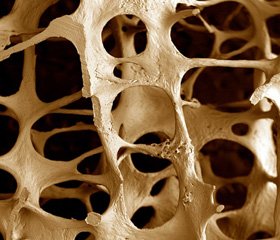Журнал «Боль. Суставы. Позвоночник» 1 (09) 2013
Вернуться к номеру
The Application of Frax® to Determine Intervention Thresholds in Osteoporosis Treatment in Poland
Авторы: Janusz E. Badurski1, John A. Kanis2, Helena Johansson2, Andrzej Dobreńko1, Nonna A. Nowak1, Stefan Daniluk1, Elżbieta Jezienicka1, 1 The Polish Foundation of Osteoporosis Research Team, Białystok, Poland, 2 World Health Organization Collaborating Centre, University of Sheffield, Sheffield, United Kingdom
Рубрики: Ревматология, Травматология и ортопедия
Разделы: Медицинские форумы
Версия для печати
Тезисы докладов Международной школы-семинара «Остеопороз в травматологии и ортопедии»
4–8 февраля 2013 года, г. Яремче, Украина
Introduction. FRAX®, an assessment algorithm for estimating fracture probability, has been widely used for the evaluation of osteoporosis since 2008. Its clinical use requires that osteoporotic fracture probability is established at which treatment can be recommended.
Objectives. The aim of the present study was to explore possible treatment thresholds for Poland.
Patients and methods. The FRAXbased probabilities were calculated in 1608 unselected postmenopausal women from Białystok using the British model (version 3.1). Intervention thresholds were set at fracture probability equal to women with a bone mass density (BMD) Tscore of –2.5 standard deviation (criterion A), equal to women with a prior fracture using a fixed threshold irrespective of age (criterion B), or an agedependent threshold (criterion C). Additionally, we assumed that all women with a prior fracture would be eligible for treatment plus those with a fracture probability equal to women with a prior fracture using a fixed threshold (criterion D).
Results. Mean 10year probability of a major osteoporotic fracture was 10.9 % when BMD was not included in the FRAX calculation and 11.6 % with BMD included. In women with a prior fragility fracture, the respective probabilities were 18.0 and 17.4 %. For criterion A, 39 % women aged 50 years or more would be eligible for treatment, for criterion D — 35 %, and for criteria B and C — 16 %. For criteria B and C, women with higher risk would be eligible for treatment compared with criteria A and D. Assuming a relative fracture risk reduction of 30 %, the number needed to treat (NNT) to prevent a major fracture was lower for criteria B and C (NNT = 13 and 14, respectively) than for criteria A and D (NNT = 18).
Conclusions. The use of intervention thresholds based on the probabilities equal to women with a prior fracture is most efficient. The use of an agespecific threshold may be more clinically appropriate than a fixed probability threshold for all ages.

